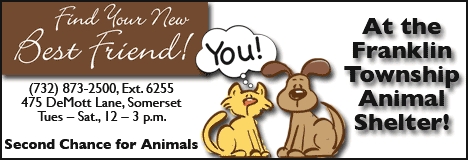
The township Open Space Advisory Committee could not be called an anti-hunting group, but nonetheless its members listened politely to an animal advocate who tried to convince them of the merits of nonlethal deer control.
The only problem was, one of the most direct strategies advocated by the Animal Protection League of New Jersey’s Doris Lin – surgical sterilization – is not favored by state officials.
In fact, it hasn’t been used since about 2006, she said.
Lin, the organization’s director of legal affairs, said the last time surgical sterilization was used by a town was by Princeton Township, in a multi-year program that ended in 2006.
“Unfortunately, the project was so successful that … the State stopped approving their applications for nonlethal management,” she said. “Since then … the state has not approved a nonlethal project because they do not want the nonlethal projects to succeed.”
“They have a strong motivation to encourage hunting,” she said.
Lin argued the state Division of Fish and Wildlife is economically invested in the state hunting program or, more specifically, in the revenue generated by hunting permits.
“The Division of Fish and Wildlife … would like to keep the deer population high in order to sell hunting licenses,” she said. “On state-owned wildlife management areas, they will plant crops just for the deer, they will clear-cut the forest to create an edge habitat that they (the deer) like, they will do prescribed burns, which creates that edge habitat, they partner with hunting groups in order to plant those crops for the deer.”
The state’s hunting program, although taking about 60,000 deer each year, is a failure, Lin said.
That’s because of something called the “compensatory rebound effect.”
“If you kill off half of the deer, all of a sudden the remaining deer have twice as much habitat, twice as much food, and they will have more twins and triplets in the Spring,” she said. “If food is scarce, a doe will reabsorb an embryo or two, and you’ll see more single fawns in the Spring.”
“Hunting is not designed to reduce the deer population,” Lin said.
Mayor Phil Kramer said that allowing hunters to cull the herd each year costs the Township nothing, but a surgical sterilization program of does could be costly.
Not as much as you’d think, Lin said.
“We’re very lucky in New Jersey, we have two veterinarians who are offering to donate their services if a town wants to do sterilization,” she said. “We also have volunteers” who are trained to help with the program.
Kramer and Township Manager Robert Vornlocker seemed skeptical that two veterinarians could make much of a dent in the problem.
“How many sterilizations can they do?” Kramer asked.
Vornlocker noted that about 16 square miles of the township is preserved open space, “a large area for deer habitat.”
“Not to mention that our problems with our deer population are really not in the preserved open space, it’s in the areas that are not preserved open space, the residential and suburban neighborhoods,” he said.
Lin said that the veterinarians would come to the Township with a mobile surgical suite, and a bait station would be set up to draw large numbers of does.
The does would then be tranquilized and taken to the suite for sterilization, she said. That’s how the program ran in Princeton, she said.
“That’s how you get a large number of deer,” she said.
When Lin was finished, the Committee members took her information, and several said they would be looking further into the idea.
 The Franklin Reporter & Advocate Eight Villages, One Community
The Franklin Reporter & Advocate Eight Villages, One Community

